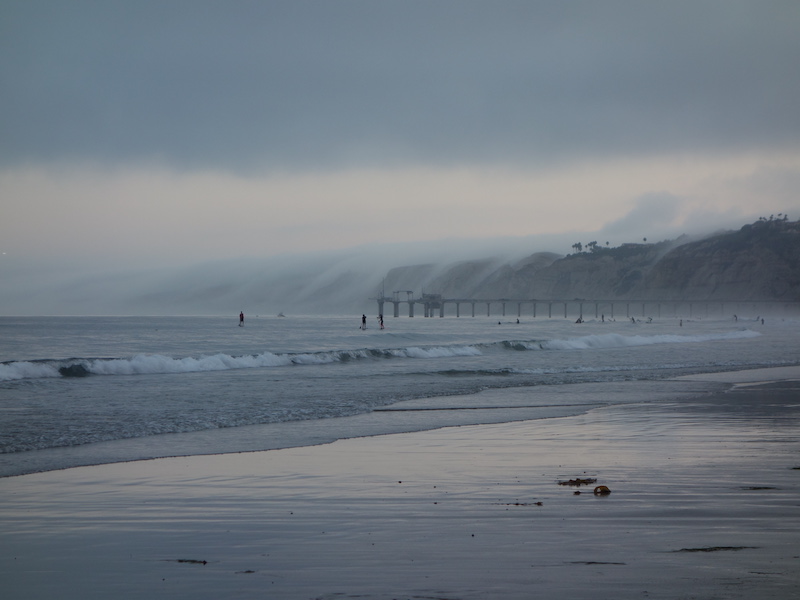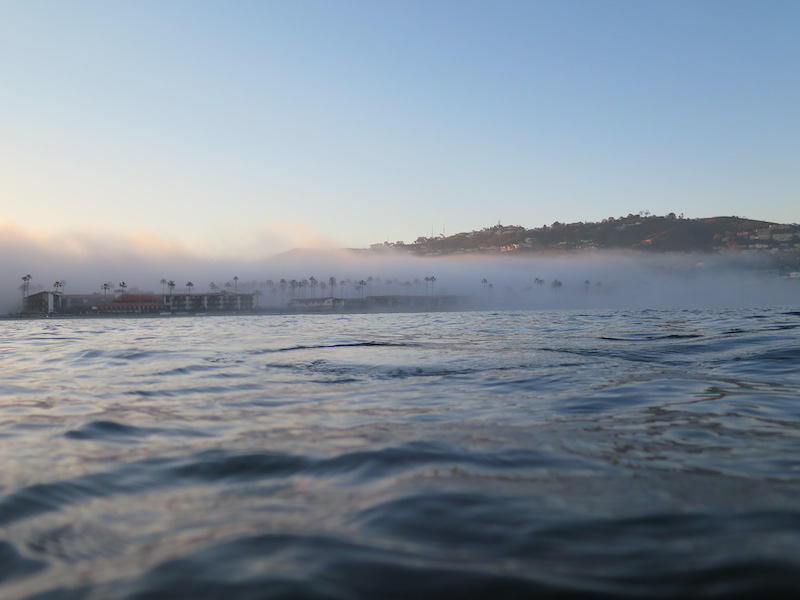ARM Going Back to California for Mobile Facility Campaign
Published: 24 March 2021
Yearlong EPCAPE field campaign will study properties of stratocumulus clouds near San Diego

The U.S. Department of Energy (DOE) regularly requests proposals from scientists worldwide to use key components of the Atmospheric Radiation Measurement (ARM) user facility for field campaigns. DOE seeks research that addresses ARM’s mission of improving the understanding and modeling of clouds and aerosols, as well as their interactions and coupling with the Earth’s surface.
From the 2019–2020 proposal call, DOE selected a new field campaign—the Eastern Pacific Cloud Aerosol Precipitation Experiment (EPCAPE)—to take place from February 1, 2023, to January 31, 2024, near San Diego, California.
EPCAPE (pronounced “ep-CAPE”) aims to characterize the extent, radiative properties, aerosol interactions, and precipitation of low marine stratocumulus clouds at the coastal edge of the eastern Pacific across all seasons.
Aerosols can have indirect effects on cloud microphysics, in turn influencing the formation and radiative properties of clouds. Stratocumulus clouds form off the California coast when cold deep seawater rises to the ocean surface—a result of coastal interactions—and cools the air. EPCAPE will explore aerosol indirect effects on these clouds to help improve their representation in earth system models.
EPCAPE researchers are also interested in how aerosols from the Los Angeles metropolitan area about 100 miles northwest might influence marine aerosols and, by extension, the clouds near San Diego. Port pollution from Los Angeles and Long Beach typically takes a day to travel downwind to the San Diego area.
The principal investigator for EPCAPE is Lynn Russell, a professor of atmospheric chemistry with the Scripps Institution of Oceanography at the University of California, San Diego.
Russell was a co-investigator for the 2015–2017 ARM West Antarctic Radiation Experiment (AWARE), considered the most comprehensive meteorological field campaign in West Antarctica since 1957.
Nuts and Bolts of EPCAPE

EPCAPE will use the first ARM Mobile Facility, which will be fresh off its yearlong deployment to Texas for the TRacking Aerosol Convection interactions ExpeRiment (TRACER). That campaign is scheduled to end September 30, 2022.
Currently, the EPCAPE plan calls for ARM instrumentation to be deployed at two sites in the San Diego suburb of La Jolla: the Ellen Browning Scripps Memorial Pier, a coastal research facility adjacent to the Scripps Institution of Oceanography; and the Scripps Mount Soledad site less than a mile inland.
Between these sites, researchers will seek to answer the following science questions:
- What are the seasonal and diurnal cycles of marine stratocumulus cloud and aerosol properties on the northeastern Pacific coast?
- How do cloud properties, including the ratio of direct-to-diffuse radiation, change as winds push coastal clouds inland?
- Will retrieved cloud properties reflect the regional signatures of aerosol?
In addition to ground-based data, in-cloud aerosol and droplet measurements will be collected to help researchers study how clouds differ in polluted and clean conditions.
EPCAPE will be the second ARM Mobile Facility deployment on California land. The first mobile facility campaign—the Marine Stratus Radiation, Aerosol, and Drizzle (MASRAD) Intensive Operational Period—was in 2005 at Point Reyes National Seashore, north of San Francisco.
Two ship-based mobile facility deployments—the 2012–2013 Marine ARM GPCI Investigation of Clouds (MAGIC) and the 2015 ARM Cloud Aerosol Precipitation Experiment (ACAPEX)—traversed the eastern Pacific Ocean using California ports.
In designing EPCAPE, says Russell, researchers considered results from ARM’s long-term Eastern North Atlantic (ENA) atmospheric observatory in the Azores, where stratocumulus clouds are common. They also looked at results from the MAGIC campaign, which explored how clouds transitioned from low drizzly cloud layers near California to puffy, rainier clouds closer to Hawaii.
EPCAPE co-investigators include Allison C. Aiken, chair of the ARM User Executive Committee; Mark Miller, MASRAD’s lead scientist and a longtime ENA site science team member; and AWARE Principal Investigator Dan Lubin.
Keep up with the Atmospheric Observer
Updates on ARM news, events, and opportunities delivered to your inbox
ARM User Profile
ARM welcomes users from all institutions and nations. A free ARM user account is needed to access ARM data.


















